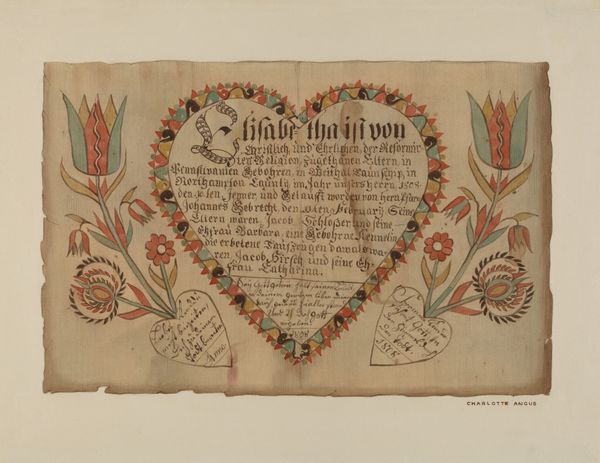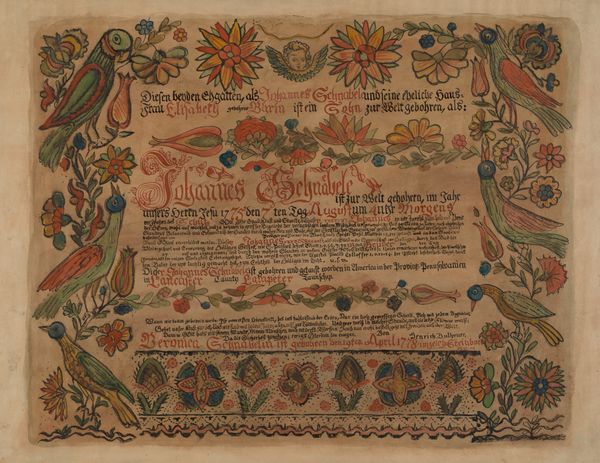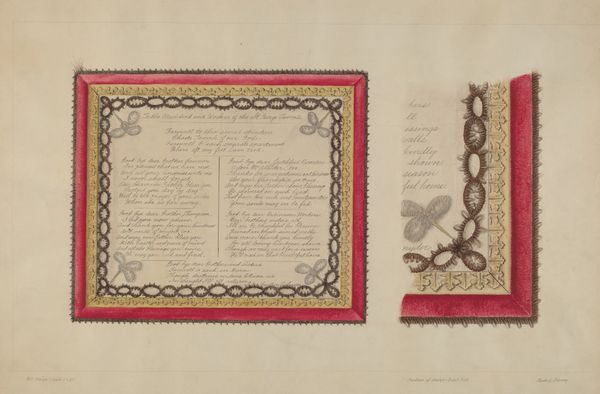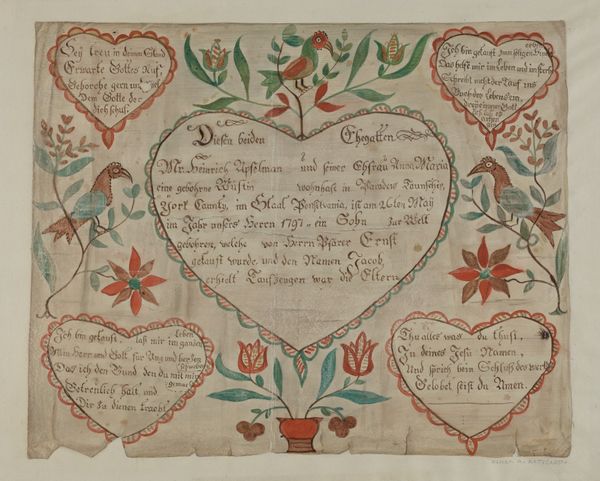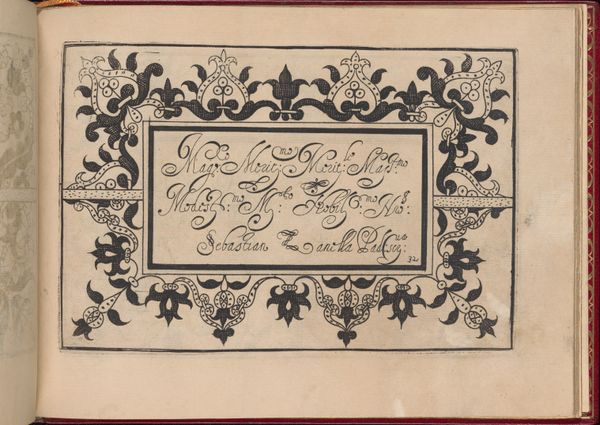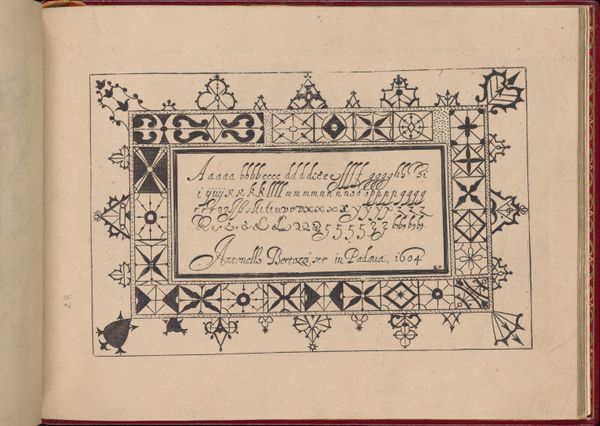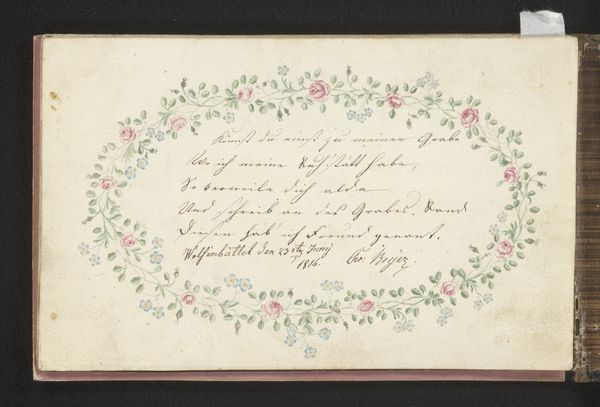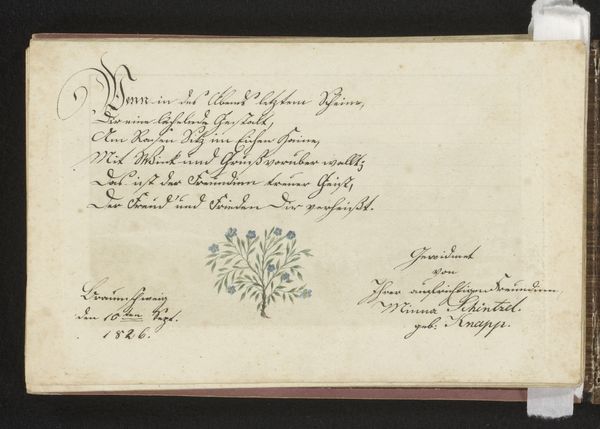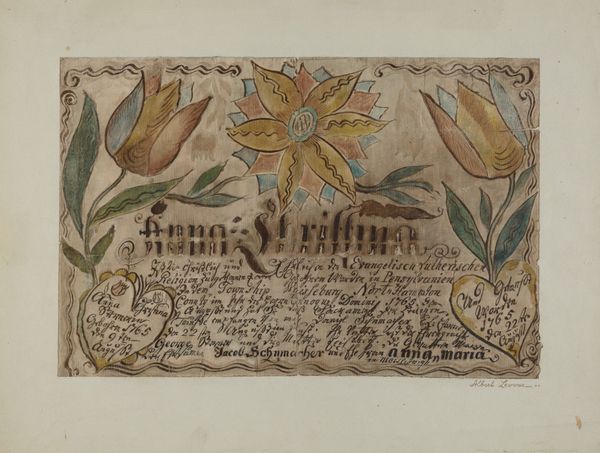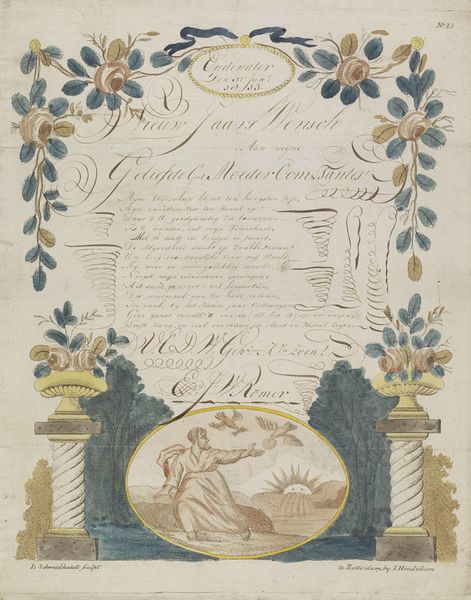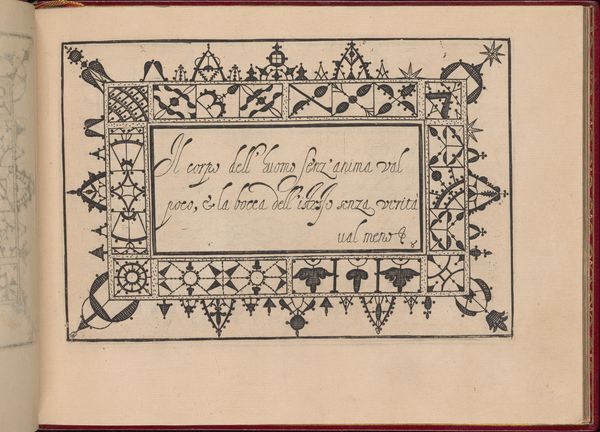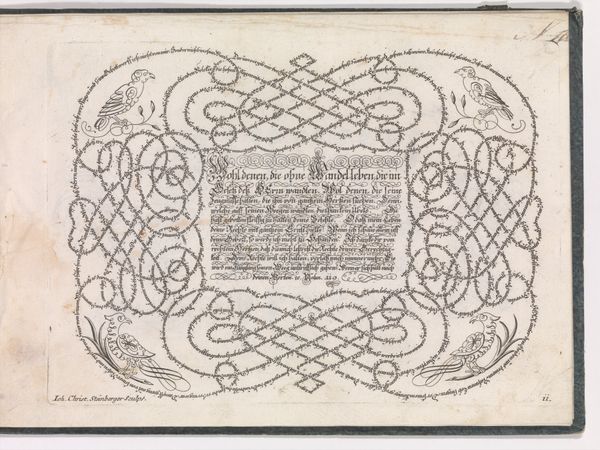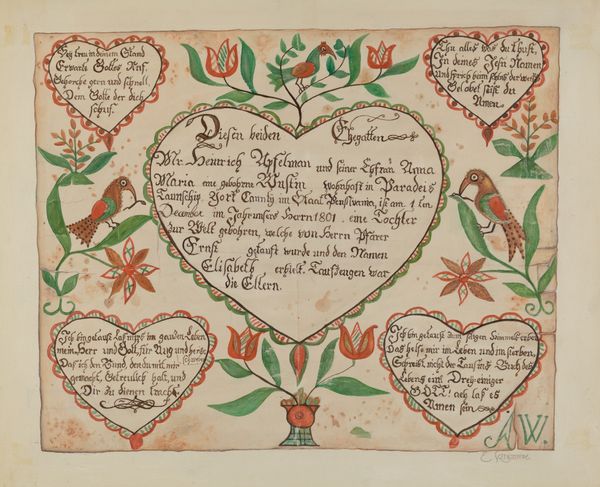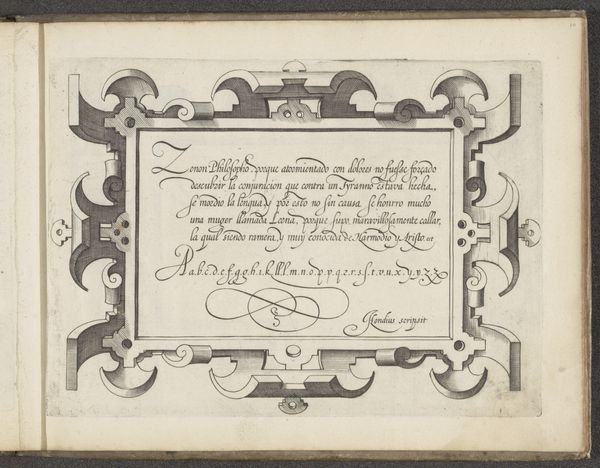
drawing, paper, watercolor
#
drawing
#
paper
#
watercolor
#
folk-art
Dimensions: overall: 28.6 x 45.4 cm (11 1/4 x 17 7/8 in.)
Copyright: National Gallery of Art: CC0 1.0
Curator: The museum is pleased to present a fraktur drawing entitled "Christening Certificate" from around 1782, rendered in watercolor and ink on paper. It’s a unique example of folk art. Editor: My first impression is of warmth. The palette, with those muted reds, oranges, and yellows, gives it a cozy feeling, like a well-loved family heirloom. It feels distinctly Pennsylvania Dutch. Curator: Exactly. These documents, hand-drawn birth and baptismal certificates, were a key element of Pennsylvania German culture from the late 1700s well into the 19th century. The certificates themselves served multiple roles—art, decoration, genealogical record, and expression of faith. The church played a significant role in disseminating such practices. Editor: The heart shape dominates the composition. It’s impossible to miss! Framed within the heart are dense lines of Gothic German script recording key familial and religious facts, flanked by highly stylized motifs like birds and floral designs. The artist clearly wasn't trained, giving it a sense of childlike sincerity. The image resonates beyond its obvious sentimentality; it tells the story of cultural persistence against a shifting political landscape. Curator: The symbolism is indeed central. The heart speaks for itself. But what about the birds? Consider how frequently birds appear on these documents. Think about migration—of people as well as culture! For a people with roots in war torn Europe these peaceful little creatures carry a layered resonance for this close knit culture with conservative beliefs. Editor: That gives me a new perspective! Seeing it within its time and place… You are so right; they are laden with emotional resonance, far more than decoration. Curator: In a period of American upheaval and revolution, the conservative Pennsylvania Dutch, resistant to cultural assimilation, reaffirmed their communal identity through this kind of devotional work. Editor: Thank you, I’m left considering the idea of cultural identity. How a specific community used personal symbolism and this type of religious artwork to create their own visual language. It's quite powerful to imagine it being cherished, displayed and reread by those early families. Curator: A remarkable testament to the fusion of faith, art, and cultural identity—isn’t it amazing how a simple piece can evoke such depth?
Comments
No comments
Be the first to comment and join the conversation on the ultimate creative platform.
